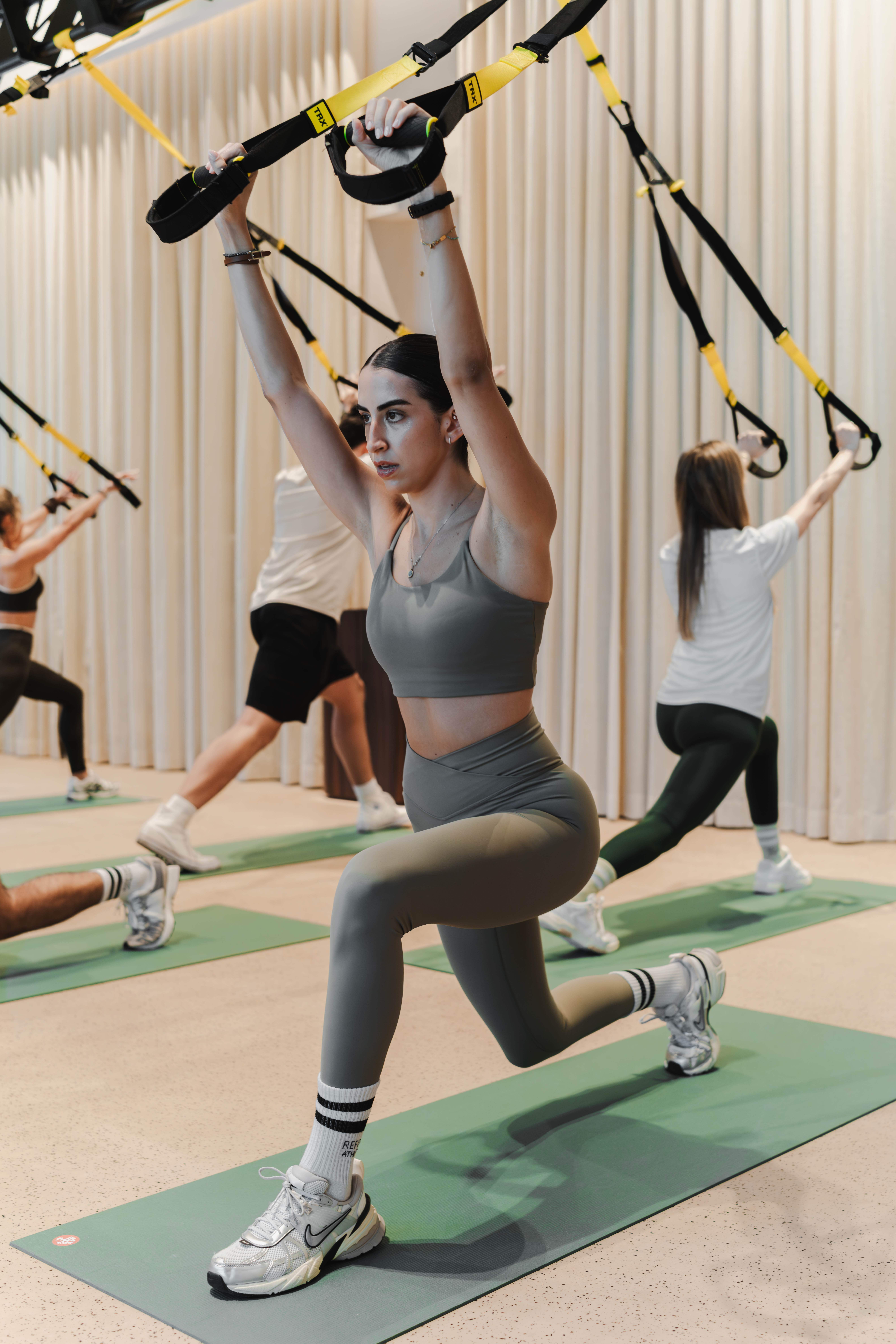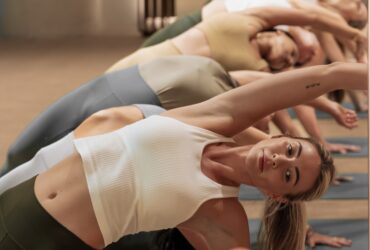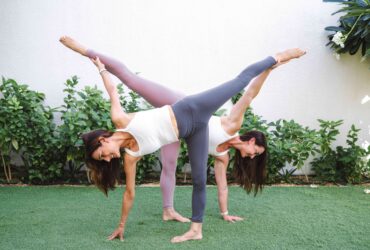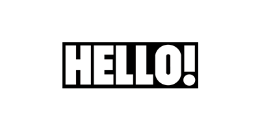
If you've ever taken a Pilates or yoga class, you've likely heard cues on when to inhale and exhale.
Interesting, isn't it? How we're coached to breathe in a certain way during movement?
In this article, I'll shed light on why breathing matters so much during workouts and share practical tips to optimize your breath for better performance, recovery, and core stability.
But first, let’s understand a little science behind breathing.
The Science of Breath
Breathing isn’t just about oxygen intake; it’s about oxygen utilization. According to the Bohr Effect, carbon dioxide (CO₂) is what triggers the release of oxygen from the blood into our cells.
In simple terms: having oxygen in your body is one thing, but effectively delivering it to your muscles and organs is another. CO₂ plays a critical role in this process.
CO₂ also signals our brain to breathe. However, many of us are over-breathers—taking too many breaths per minute, resulting in shallow breaths. This habit limits efficient gas exchange, leaving our bodies less capable of absorbing the oxygen we inhale.
The key to optimizing oxygen delivery lies in building CO₂ tolerance. This means training your body to handle a safe buildup of CO₂ without feeling the urge to breathe rapidly.
Oxygen is food for the body.
Tip 1: Breathe Through Your Nose
The first, and most important tip, breathe through your nose. The most effective way to improve your breathing—and, by extension, your performance—is to breathe through your nose.
Why?
10-20% more oxygen absorption: Nasal breathing delivers significantly more oxygen to the body compared to mouth breathing.
Nitric oxide production: Breathing through your nose generates nitric oxide, a gas that opens airways, improves blood flow, and enhances oxygen delivery throughout the body.
Diaphragm engagement: Nasal breathing activates your diaphragm, protecting your spine and reducing the risk of injury.
Keeps your body hydrated: 42% more water is lost when exhaling through the mouth than through the nose! This not only accelerates dehydration during workouts but also triggers inflammation, which makes breathing harder and sets off a cycle of mouth breathing. By breathing through your nose, you help maintain hydration and improve overall respiratory efficiency.
By contrast, mouth breathing encourages over-breathing, disrupts CO₂ levels, and reduces efficiency. The only time mouth breathing should be used is during exhalation in high-intensity activities like boxing or sprinting. Otherwise, stick to your nose.
Tip 2: Master the Three-Part Breath
A foundational breathing technique that helps maximize oxygen delivery is the three-part breath which engages the diaphragm and rib-cage fully. This method focuses on:
1. Belly breathing: Expanding the lower abdomen as you inhale. The belly should push out on the inhale, and fall in on the exhale.
2. Lateral ribcage breathing: Allowing the ribs to widen outward and wide with the inhale, and falling in on the exhale.
3. Chest breathing: Slightly lifting the upper chest as a finishing touch to the inhale, finding more space in the upper lungs, to increase lung capacity.
To practice:
- Place one hand on your belly and the other on your ribs.
- Inhale deeply, feeling your belly rise, ribs expand outward, and chest gently lift.
- Exhale completely, feeling the reverse motion as your ribs compress and belly softens.
This technique not only trains efficient breathing but also strengthens the diaphragm and increases lung capacity.
Tip 3: Exhale on Effort
If you’ve done Pilates, you’ve probably heard the cue, “Exhale on the effort.” This is because exhaling engages your abdominal muscles, helping to stabilize your core during challenging movements.
Exhaling through the mouth isn’t necessarily required, and I believe it's more of a psychological habit we've adopted. In fact, one study found that individuals instructed to inhale through the nose and exhale through the mouth had a 200% greater chance of experiencing nasal stuffiness, with congestion lingering for up to 10 minutes after exercise!
Instead, try exhaling through your nose. This not only keeps your diaphragm engaged but also maintains a more efficient oxygen exchange.
Tip 4: Use Breath Holds to Recover
If you find yourself running out of breath during a workout, try this:
1. After exhaling, hold your breath for five seconds.
2. Repeat this up to five times in a row.
Why does this help? Holding your breath increases CO₂ in your body, which triggers the release of oxygen into your bloodstream, muscles and organs. This allows your muscles to recover faster and your breathing to stabilize.
Tip 5: Practice "Breathe Light"
Endurance activities are often limited not by muscular strength but by the respiratory system's ability to meet oxygen demands. To train your breath for endurance, try the "Breathe Light" technique:
- Take slightly smaller breaths than you normally would, creating a feeling of mild air hunger. Takin gin 70% less air than your normally would.
- Tip: If you place your finger underneath your nose, you should hardly feel any air coming out during your exhale.
- Keep breathing through your nose—both on the inhale and exhale.
- The goal is to develop a slight air hunger – the feeling that you’d like to take a deeper breath. This is positive feedback that you are doing the technique correctly.
3. Practice this for 5–10 minutes daily.
The goal is to tolerate a slight buildup of CO₂ in your blood. This not only improves oxygen delivery to working muscles but also delays muscle fatigue, enhancing overall endurance and performance.
Recap: Avoid Common Breathing Mistakes
Many of us fall into inefficient breathing patterns without realizing it. Here are a few common pitfalls to watch out for:
Chest breathing: Shallow breaths that engage the chest rather than the diaphragm limit oxygen delivery and increase, both, mental and physical stress. To avoid shallow breathing, breathe through your nose. This will automatically engage the diaphragm, making the breath deep.
Mouth breathing: Leads to over-breathing, disrupts CO₂ levels, reduces oxygen efficiency, and leaves you dehydrated and congested.
Holding your breath unnecessarily: Avoid breath-holding during steady-state exercises unless practicing it intentionally (e.g., during breath-hold drills).
Final Thoughts
Breathing is often overlooked in the fitness world, yet it has the power to transform your workouts. By focusing on nasal breathing, building CO₂ tolerance, and incorporating techniques like three-part breath, breath holds, and "Breathe Light," you’ll unlock new levels of efficiency, strength, and recovery.
Next time you hit the mat, gym, or track, pay attention to your breath—it might just be the key to your best workout yet.
Written by: DIMA WADJIH












